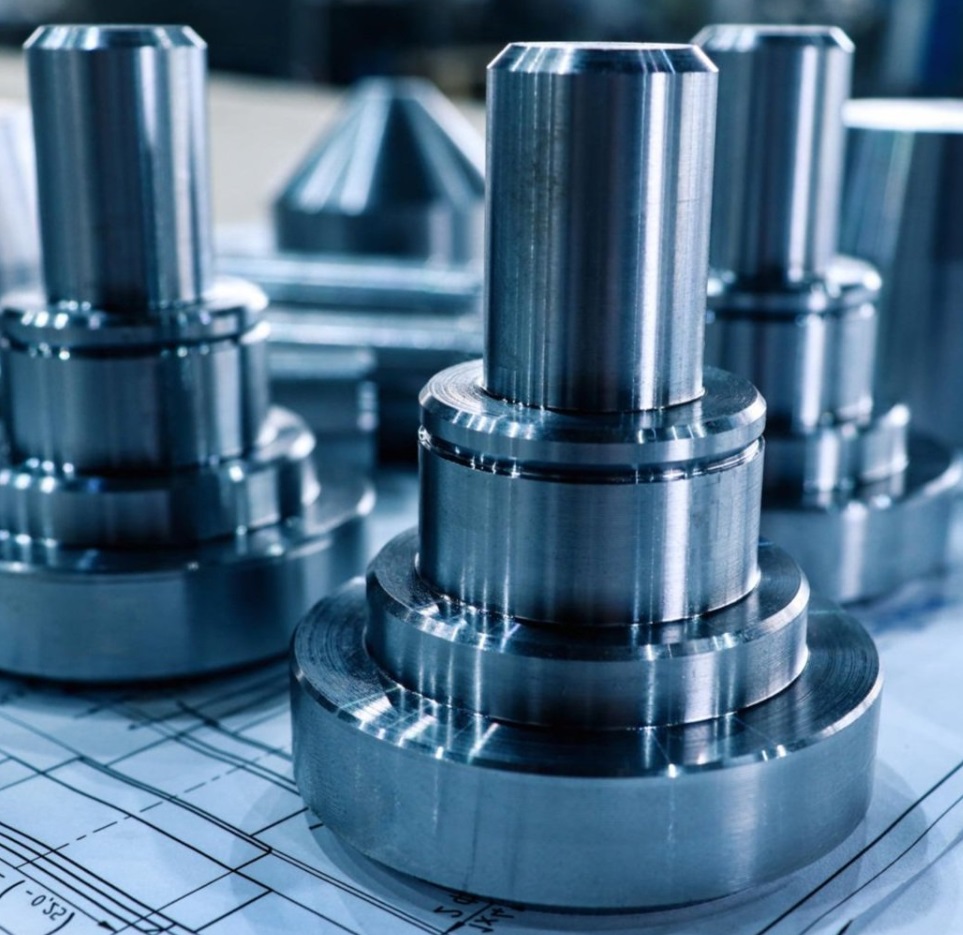The Ultimate Guide to CNC Turned Parts: Unleashing Precision and Efficiency
We say that Computer numerical control is the newest innovation in the manufacturing and production sectors but CNC (computer numerical control) goes way back and connects with the concept of numerical control which is already present in the aviation industry.
Keep reading and learn about CNC machining, the intricacies of CNC-turned parts, their applications, benefits, and the unmatched value they bring to your projects.
 Picture 1 of The Ultimate Guide to CNC Turned Parts: Unleashing Precision and Efficiency
Picture 1 of The Ultimate Guide to CNC Turned Parts: Unleashing Precision and Efficiency
How CNC Turned Parts Works
CNC turned parts, also known as lathe-turned parts, are vital components produced using computer numerical control (CNC) machines by CNC Machining Companies. The CNC system, which has profoundly transformed the industry, is characterized by its automatic, precise, and constant control of movement.
The use of a computer to monitor and control these precise movements is the essence of how the CNC works.
The CNC lathe has the ability to create cylindrical parts. In the CNC Lathe, the raw material to be used is rotating on a plate, while this tool is cutting and giving it the necessary shapes. Due to high-tech systems, CNC machines are able to create complex geometries with 100% consistency.
Applications of CNC Turned Parts
CNC turned parts find extensive applications across diverse industries, where precision and reliability are paramount. Let's explore some of the key sectors benefiting from these exceptional components.
1. Aerospace Industry
The aviation industry depends on parts made with the highest precision to avoid aircraft damage. The aircraft must be subjected to extreme pressures, high speeds and fast air currents, even a small malfunction can snag on the airflow creating drag, or can wear parts faster. CNC machines, due to their high machining accuracy and production capacity, can produce high-precision parts with tolerances down to 0.00004 inches. They are utilized in aircraft engines, landing gear systems, avionics, and various other applications.
2. Automotive Industry
The automotive industry depends on parts such as engines, suspension, gears and other components to have a high surface finish, strength and long service life. The transportation industry depends on parts that can be subjected to huge loads, high wear, huge torques and deformations.
Parts made for the transport industry must be very strong to withstand long distances and for longer periods of time. CNC turned parts find their way into engines, transmissions, suspension systems, braking mechanisms, and numerous other automotive applications.
3. Medical Sector
The medical industry requires products with biocompatible materials, high precision and high volumes to meet the needs of patients and is highly dependent on customized products that meet the most stringent medical standards for patient care. At the same time, it must meet the strict medical standards set by the medical regulatory authorities.
CNC turned parts are extensively used in medical devices and equipment, including surgical instruments, implants, prosthetics, and diagnostic tools.
4. Electronics and Telecommunications
Parts used in the electronics and telecommunication industry can be extremely compact, about the size of a fingernail, depending on the application. CNC turns parts, due to their precision machining, can achieve these small dimensions with exceptional precision and complexity.
They allow you to produce parts not only small in size, but also very complex shapes such as circuit boards, connectors, switches, and other electronic devices. Another reason CNC turning parts are used in the electronics industry is their ability to assemble parts with the highest precision and speed.
Advantages of CNC Turned Parts
CNC turned parts offer numerous advantages that make them an indispensable choice for precision engineering. Let's delve into the key benefits these components bring to your projects:
1. Unmatched Precision
One of the most important features of CNC turning parts is its ability to be extremely precise. Computer programming means that machines can work without human intervention, and reducing the risk of errors. These parts have an automated nature which ensures accuracy and consistency in results.
2. No Risk of failure
CNC turning parts has high machining precision and surface finishing, and the manufactured parts are always of consistent quality. Without human labor, workplaces become safer for manufacturing. This level of precision guarantees a perfect fit and seamless integration with other components, minimizing the risk of failure or malfunction.
3. Enhanced Efficiency
Most CNC turning parts run at a relatively fast speed and can work for a long time without interruption. Due to its ability to automate the manufacturing process production capacity is increased which reduces lead times and turnaround times are faster. One operator can oversee the operation of multiple machines, which can help improve the production efficiency of complex parts with ease without the need to hire additional labor for manual setups.
4. Wide Material Compatibility
One of the significant advantages of CNC turning is its ability to work with a wide range of materials. From metals like steel, aluminum, and titanium to various plastics and composites, CNC turned parts can be fabricated from diverse materials, providing flexibility and versatility in component design and application.
5. Cost-Effectiveness
CNC turned parts are a wise investment for businesses of all sizes and types. It provides advanced technology with cost-effective solutions that can help optimize your project's budget. The precision and efficiency of CNC lathes rarely waste materials or available resources, especially for precious metals, such as titanium, aluminum, etc., effectively saving the total cost
6. Repeatability
CNC turned parts are known for their ability to produce parts with consistent repeatability. This means that the same part can be produced accurately and consistently multiple times, which is essential for mass production and the quality of the final product.
Quality Assurance and Expertise
Let's clear one thing here, Quality is the utmost necessity while using CNC turned parts.
Why I am saying that?
CNC turned parts are used at the crucial places of the machines handling overall processing.
Here, our company has the expertise and honor of manufacturing the highest quality standards products. Focus is on 3 things
- CNC machines operated by highly skilled technicians
- Regular technical training to ensure exceptional craftsmanship.
- Inspections, testing and quality control measures at every step of the manufacturing.
- Guarantee that every CNC turned part while delivery meets the strictest required specifications.
Conclusion
CNC turning Parts will continue to be a useful production tool in various industries. The ability of CNC machines to create parts from a variety of materials to desired standards is another factor that makes it imperative. They can be used in small electronic components to very complex parts such as motors, according to the needs of the industry. Trust our expertise and experience to deliver CNC turned parts of exceptional quality, surpassing industry standards and meeting your unique requirements because different types of CNC turning parts will continue to serve different industries with new production tools and technologies.
You should read it
- How to fix Network discovery is turned off error on Windows 10
- How are DEB packages turned into backdoors? How to detect?
- What to do if the Laptop is Locked and then turned off?
- Laptop disconnects from wifi when screen is turned off, effective solution
- How to fix the error of the computer screen being turned upside down
- [FIXED] Computer lost data when shutting down
- Can the computer be accessed remotely when turned off?
- The special gun turns your tears into true weapons literally
- Australia discovered dinosaur fossils turned into gems
- What is pagefile.sys? Can pagefile.sys be deleted? Should Pagefile.sys be turned off
- Why is the computer screen suddenly turned off?
- How to Enable JavaScript on Android Phone
May be interested

Close the door when turning on the air conditioner, everyone thinks it's right, turns out the mistake is not good for health

11 ways to keep IoT devices safe

Things to keep in mind when buying used air conditioners

How to check when buying and assembling air conditioners

Things to know when using the air conditioner

How to use the air conditioner






 Dell Precision 7540 Review: High-end laptop workstation, vivid 4K display
Dell Precision 7540 Review: High-end laptop workstation, vivid 4K display Dell launched the Precision M6500
Dell launched the Precision M6500 Dell announces the 'massive' configuration of dual workstations
Dell announces the 'massive' configuration of dual workstations The aircraft operates solely on electricity, with no moving parts turned on
The aircraft operates solely on electricity, with no moving parts turned on The Ultimate Smartwatch Buyer's Guide
The Ultimate Smartwatch Buyer's Guide Windows 7 will not have Ultimate Extras
Windows 7 will not have Ultimate Extras